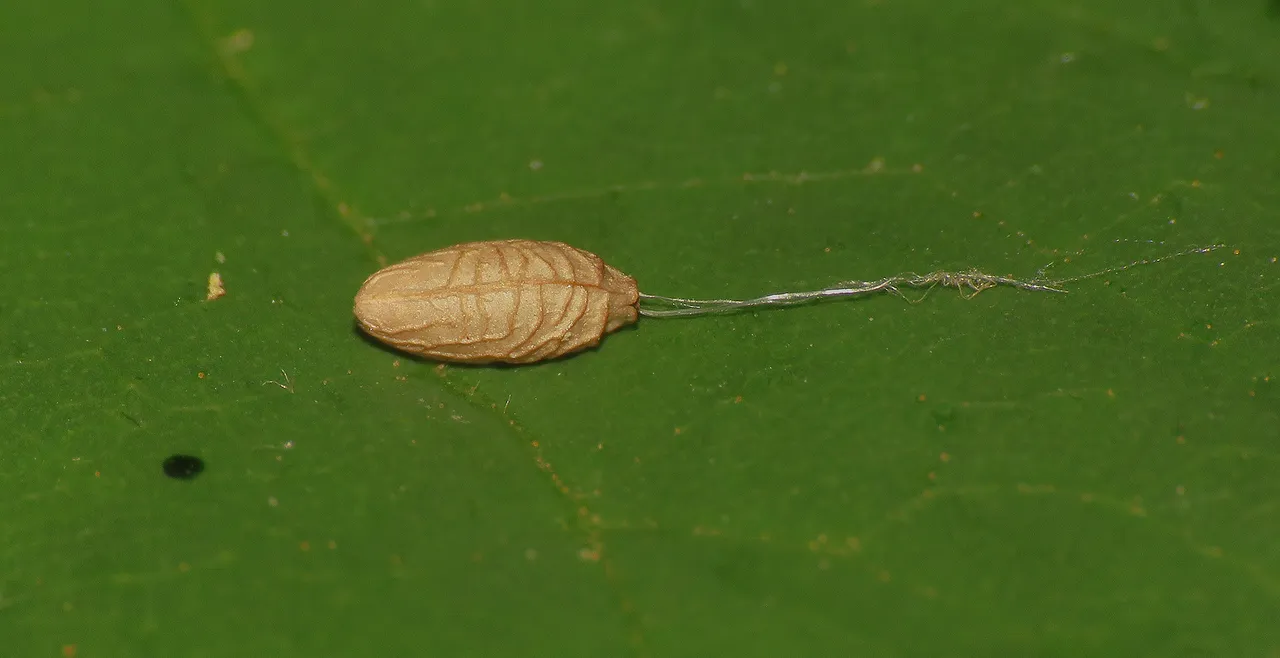A couple of months ago, on 21th of June, I drove about sixty - seventy kilometers north of my hometown, to the wooded, rural area around the city of Pazin, situated in the central part of Istra.
The weather was really nice. Not too hot and moderately windy.
The last rain fell only a couple of weeks before. The vegetation was lush and green, and the current draught, accompanied by frequent wildfires hasn't yet become the main theme of the summer.
As you can see in this photograph, a friend was also there with me. The small human figure nicely accentuates the grandeur of the surrounding nature. We left the car on the outskirts of a small village whose name I have completely forgotten and continued walking along the narrow path that leads into the woods.

Here you can see one of only a couple of flowers found on the dense growth of Lamium garganicum plants that were prospering in the shade under the trees.
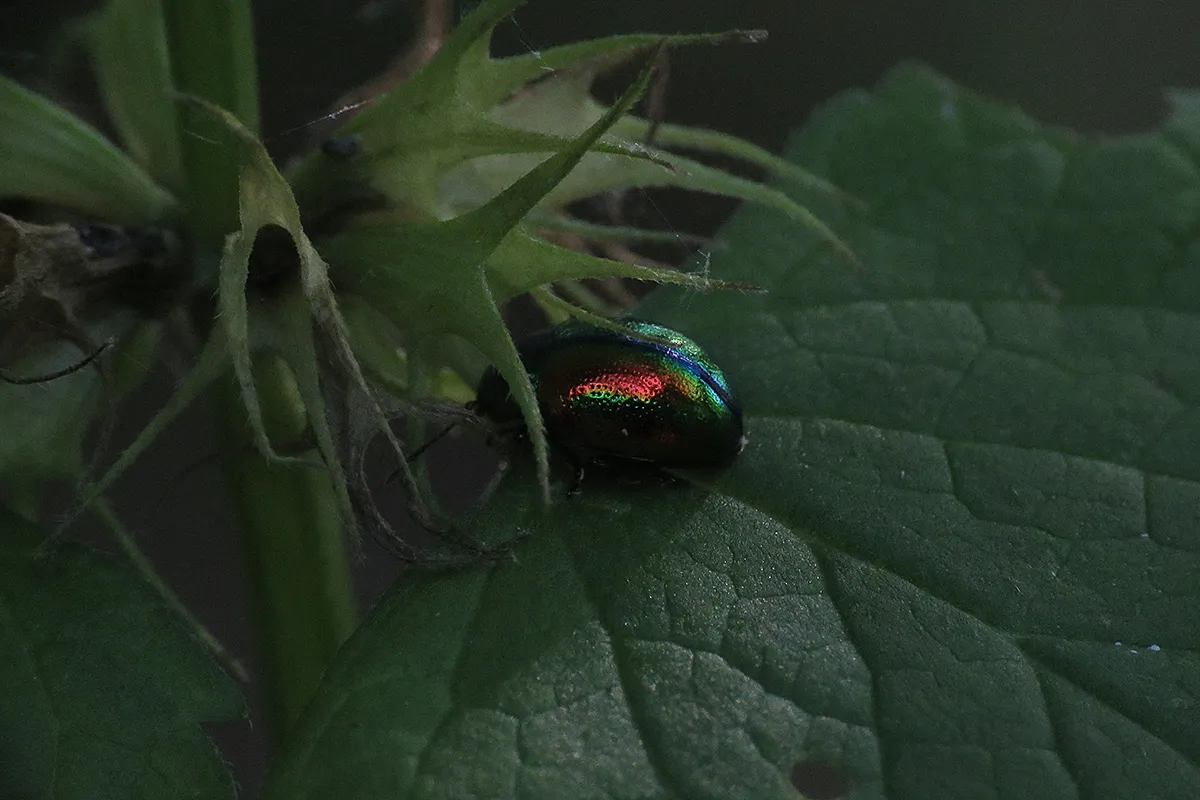
This shiny beetle was also photographed there, on one of those plants.

The name of the species is Chrysolina fastuosa. It's a leaf beetle. A member of the large varied, and often very colorful Chrysomelidae family.
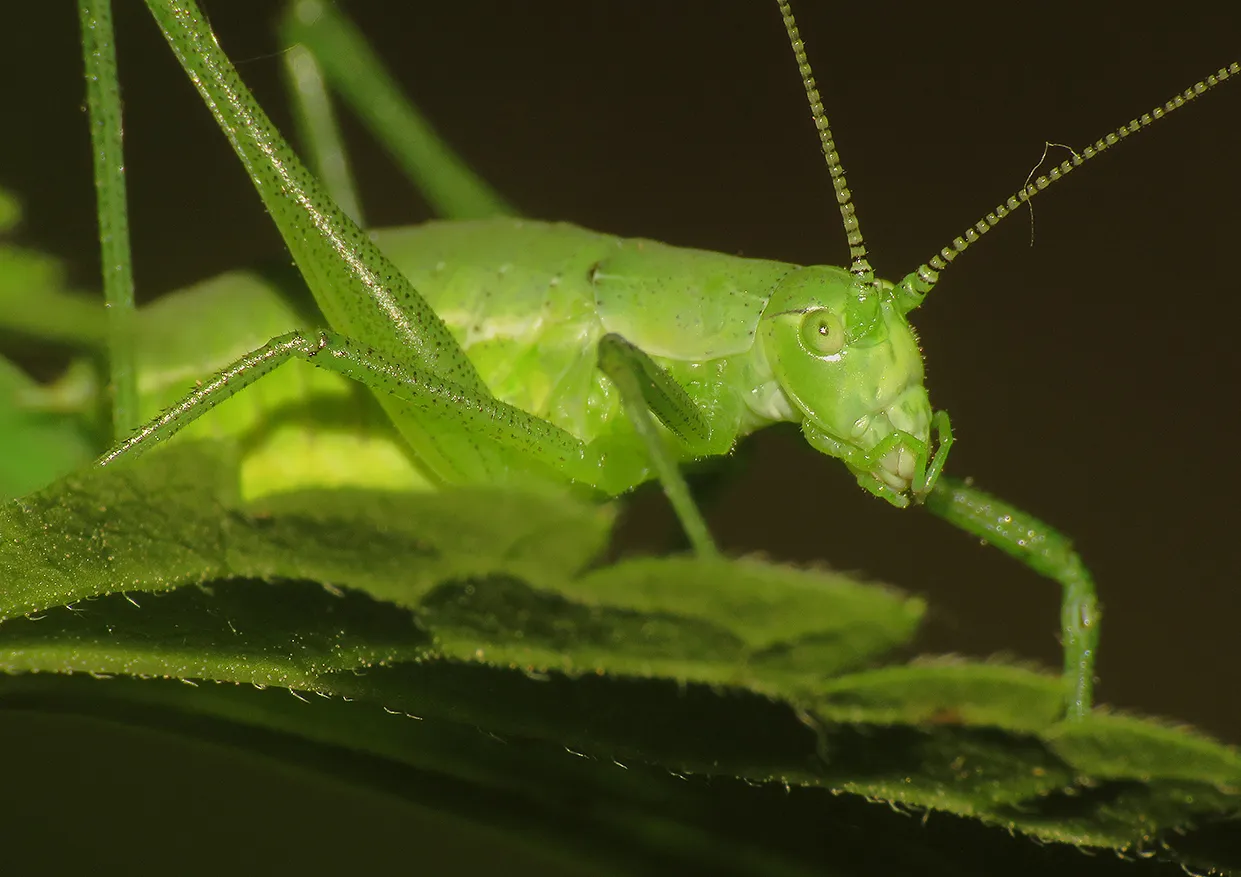
A minute or two later and a meter or two further, I noticed a cricket.

A well-camouflaged green bushcricket. Can't tell you the name of the species. The family is obviously Tettigoniidae. The genus is probably Isophya. But the species? I don't know.
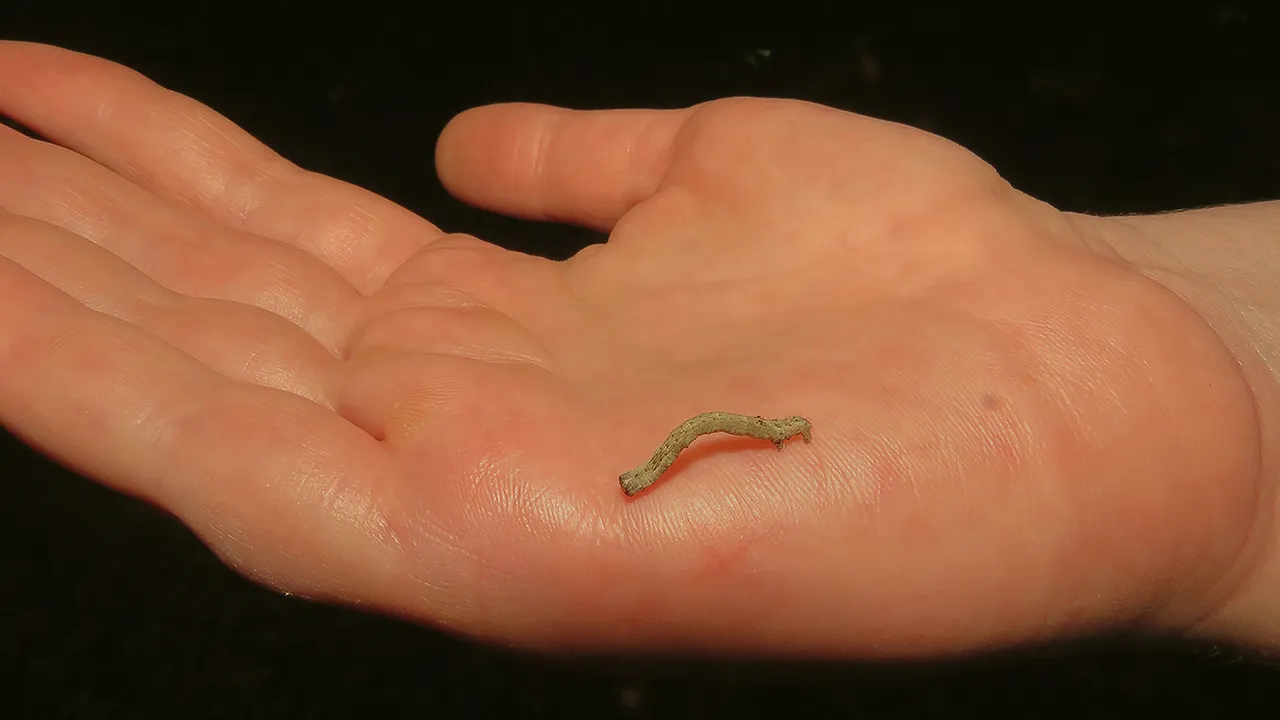
This little inchworm that ended up on the palm of my friend's hand was hanging from the lower branches of a nearby tree.

I took these two photographs, and then ...

... the caterpillar was encouraged to grab a leaf and leave the hand.
Here again, I can't tell you the exact species. But I can say that this is definitively the larva of some moth species from the Geometridae family. Quite a few Geometridae moths present in the area have similar larvae making the identification without an adult pretty confusing.
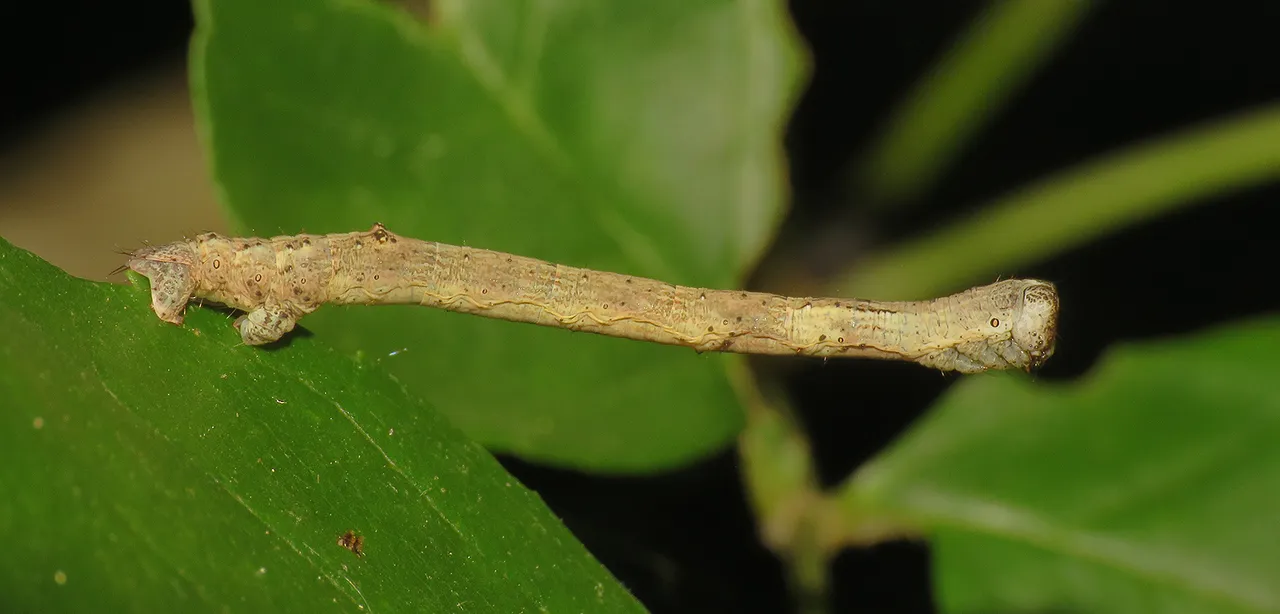
When they assume their typical mimetic pose, these twig-like caterpillars are very hard to notice.
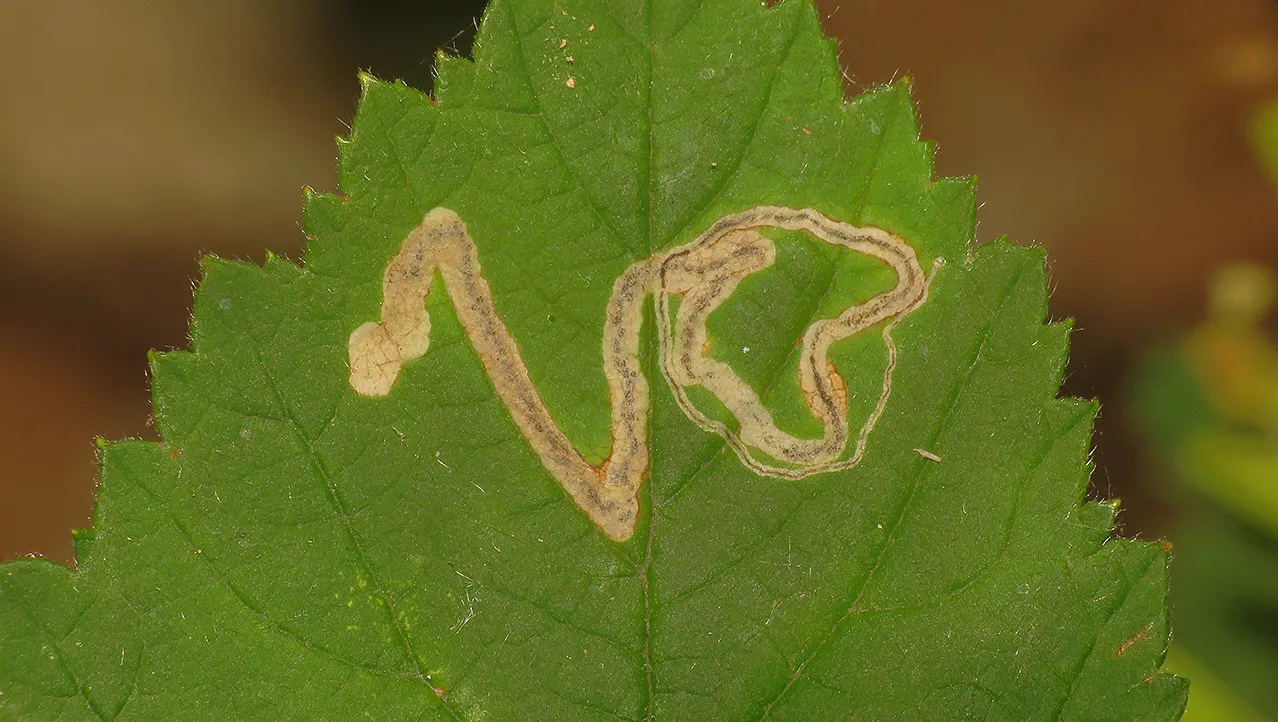
This interesting artwork was created by some kind of leaf-mining insect. Larvae of moths, flies, beetles, or sawflies could have done that. Quite a few species can be considered leafminers in their feeding habits. In the following photograph ...
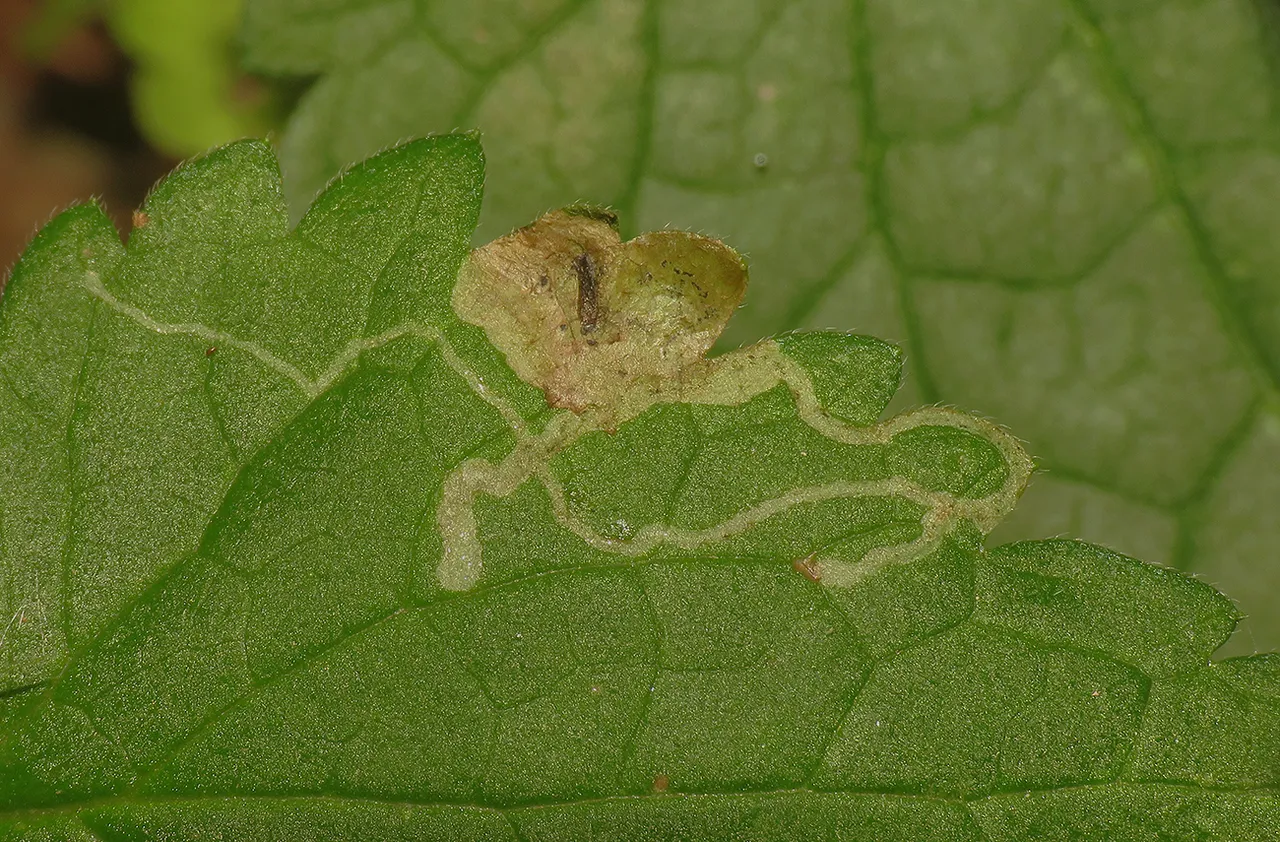
... you can see a fairly similar feeding trail, but this one has a considerably lesser visual impact. This feeding - art just isn't as good.
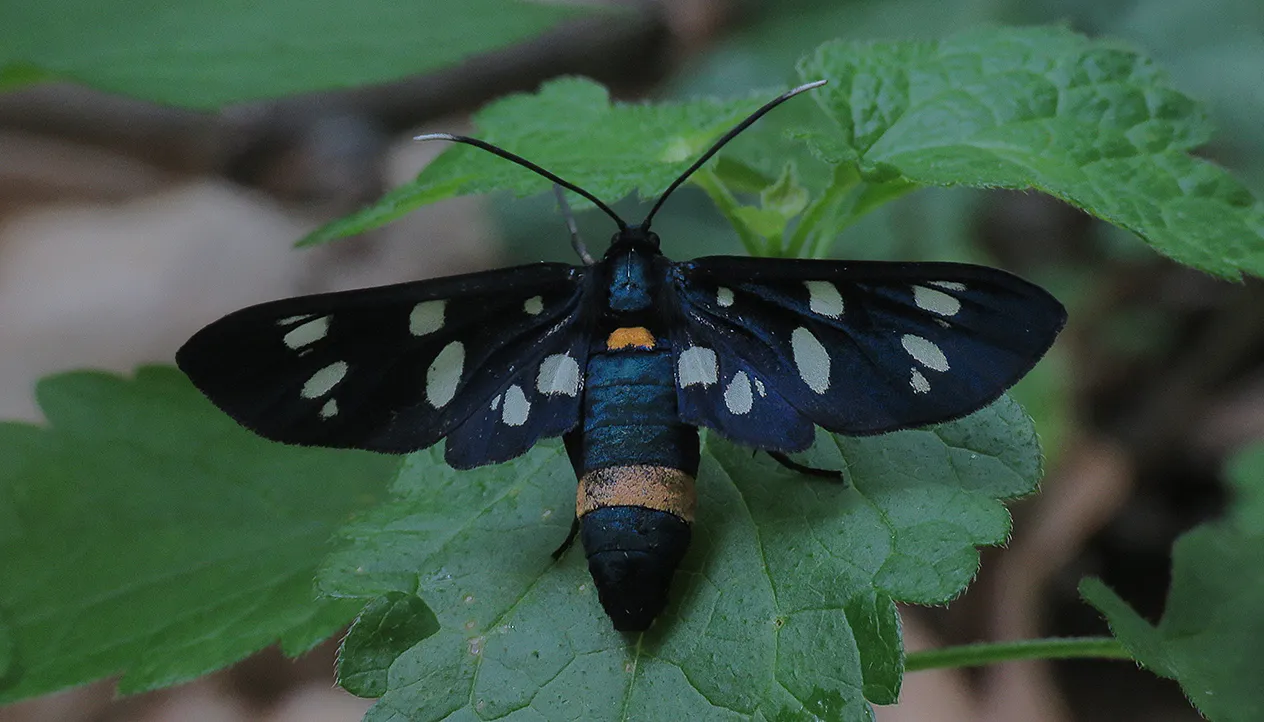
A female Amata phegea moth was resting nearby. This diurnal species is very common and widespread in all kinds of habitats here in Istra. The family is Erebidae.
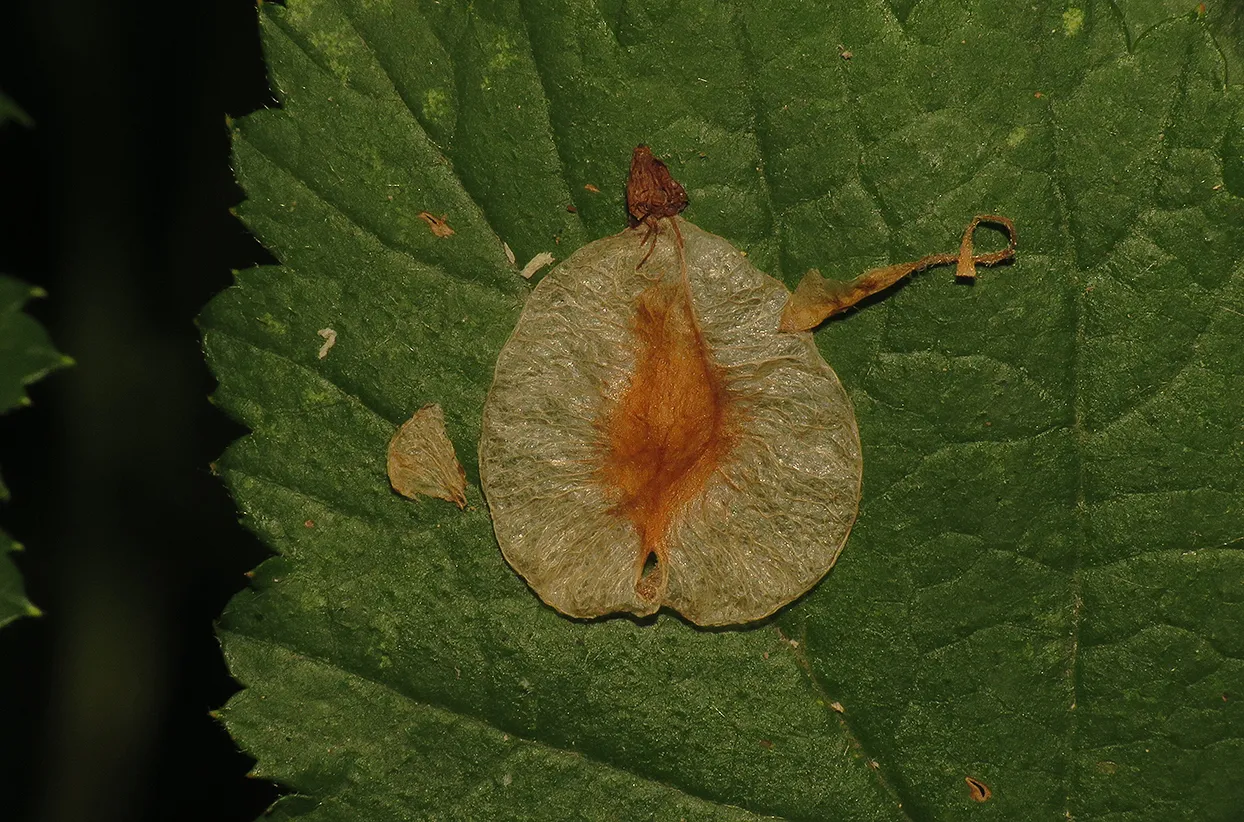
Many fruits fallen from the field elm (Ulmus minor) ended up on the herbaceous vegetation under the tree.

Some of them were slowly rotting and dissolving.

Soon I found another insect.

The family is certainly Ichneumonidae. That's all I can tell you about this little wasp.
I don't know which plant produced this seed.
It has an interesting appearance. It looks a bit like a spermatozoon. On the leaf litter under this scene ...
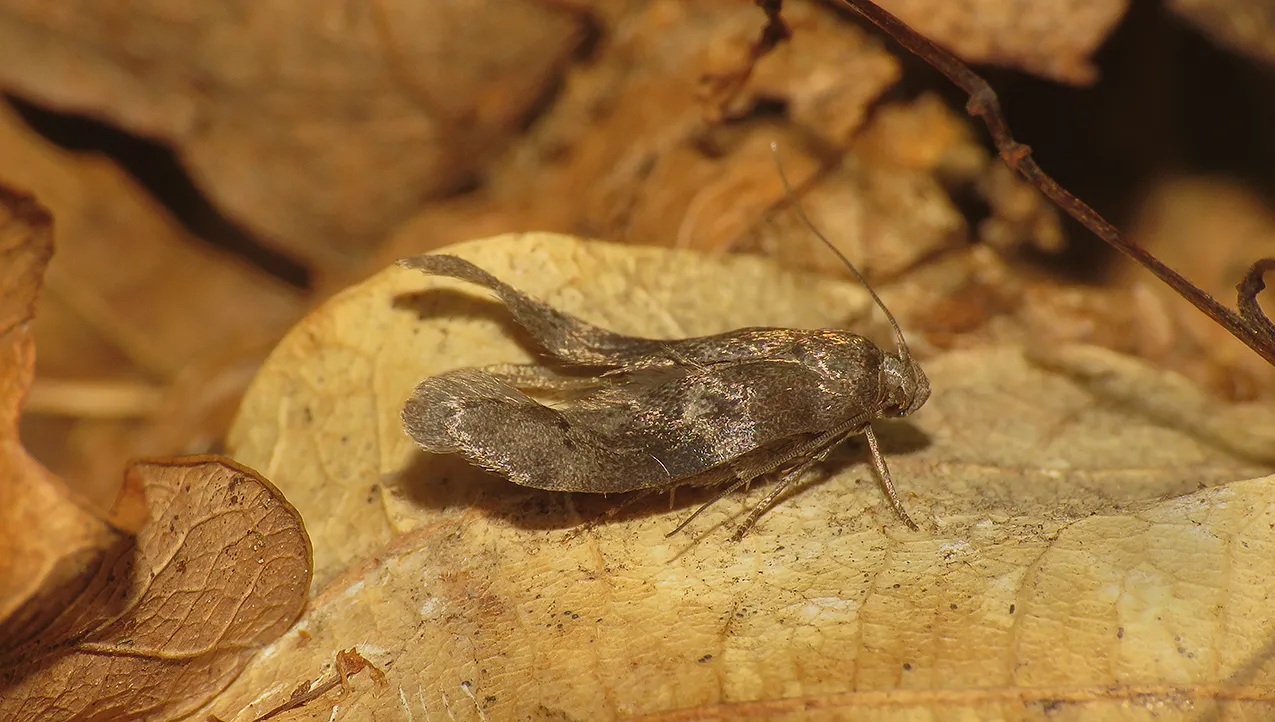
... I found another moth. It looks like some species from the Pyralidae family. Which one exactly? I don't know.
Its wings are still slightly folded because the moth recently came out of the pupa. It's a brand new moth.

Five or ten minutes later the moth climbed on one of the nearby herbaceous plants.

I took one more shot, and then ...

... walked out of the shady green tunnel.

Before continuing back to the car, I stop at the entrance to photograph this little spider.

I don't know the name of this species from the Araneidae family.
On the way back home we stopped by the roadside fruits & vegetables stand on the outskirts of the small town of Vodnjan. At his point, we were about twenty kilometers from home. While the friend was buying the stuff ...
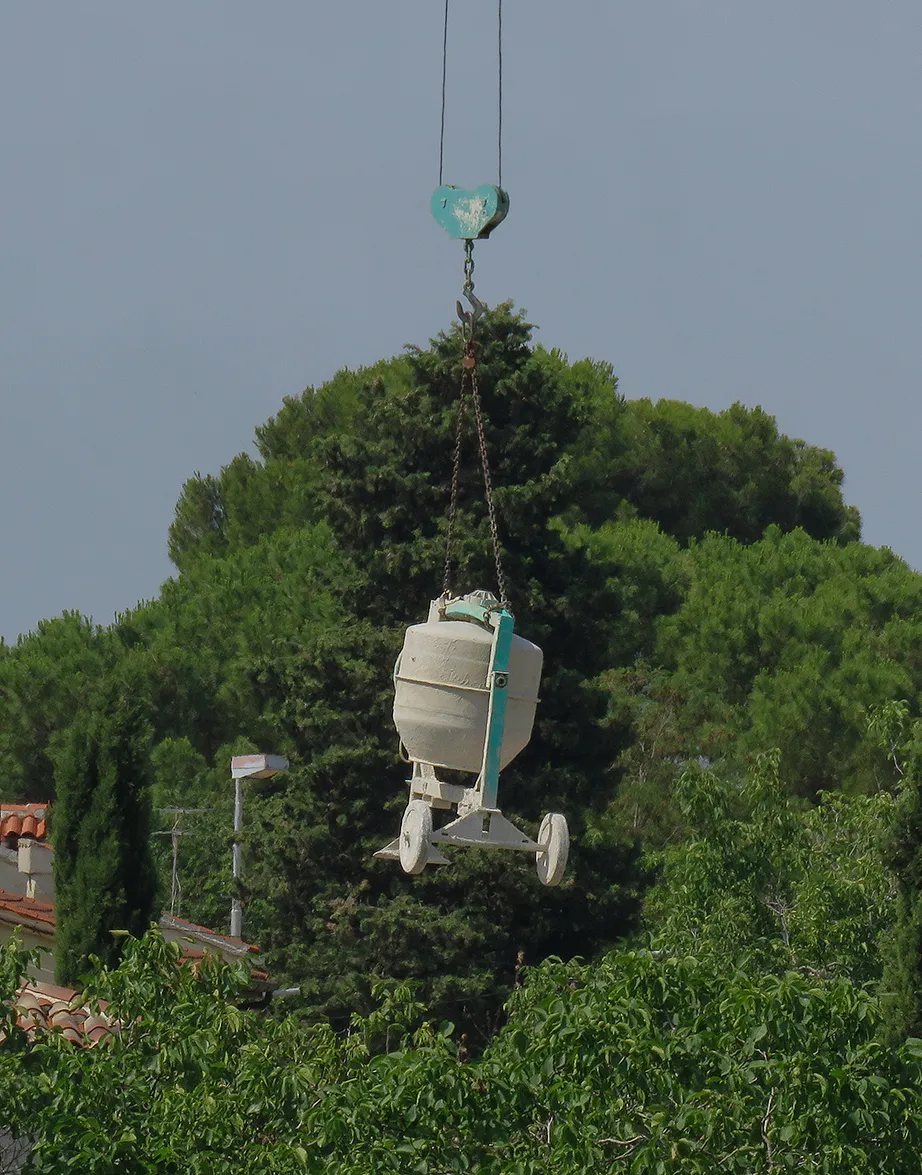
... I spent some time photographing this hanging concrete mixer.

Some apartment buildings were under construction not far from there.
The following links will take you to the sites with more information about the protagonists of this post. I found some stuff about them there.
https://www.leps.it/
https://www.plantea.com.hr/bjelopjegavi-ovnic/
https://www.inaturalist.org/projects/croatian-orthoptera-skakavci-i-zrikavci-hrvatske?tab=species
https://en.wikipedia.org/wiki/Chrysolina_fastuosa
AND THAT'S IT. AS ALWAYS IN THESE POSTS ON HIVE, THE PHOTOGRAPHS ARE MY WORK - THE END.





